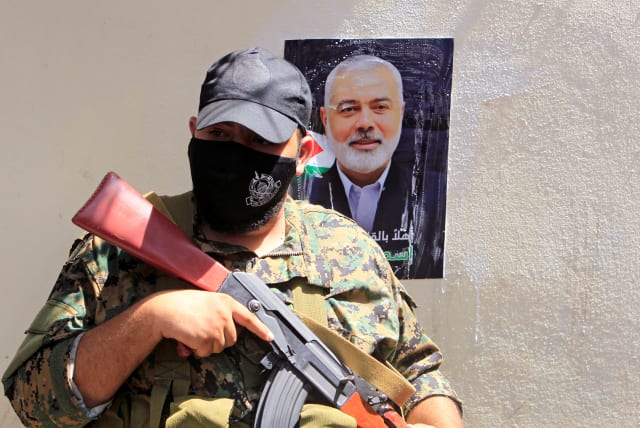
Dozens of people were arrested on Tuesday for protesting in the US Capitol rotunda in Washington, DC, in favor of ending military aid to Israel and for a ceasefire in the country's war with Hamas, US Capitol police said.
Reports by Axios and Maariv estimate that the number of arrests made by Capitol Police was around 60 for holding what the latter source stated was an "illegal demonstration."
Protesters waved signs saying "Stop funding violence," "Divest from militarism - invest in life," and "Ceasefire now," all while shouting "No more money for Israel's crimes." They also placed children's shoes to protest the death of children in the Israeli bombings of the Gaza Strip.
“STOP FUNDING VIOLENCE”#FreePalestine protesters inside Rotunda of Capitol to remind Congress that 20,000 Palestinians have been killed & to #StopArmingIsrael pic.twitter.com/o7HgGJMvft
— #StopCopCity (@ChuckModi1) December 19, 2023
The protest was led by prominent anti-Zionist activist Linda Sarsour, a BDS figurehead who was also among those who were arrested by police. Last month, she laughed at posters of the hostages being held by Hamas, according to Maariv.
Capitol Police said that the participants in the demonstration went through a security check at the entrance to the building, but when the protest began, they acted immediately to arrest them. "It is against the law to demonstrate inside the congressional buildings; that's why we brought more police officers to be ready for the moment when the group broke the law," they said. "About sixty people were immediately arrested as soon as they broke the law."
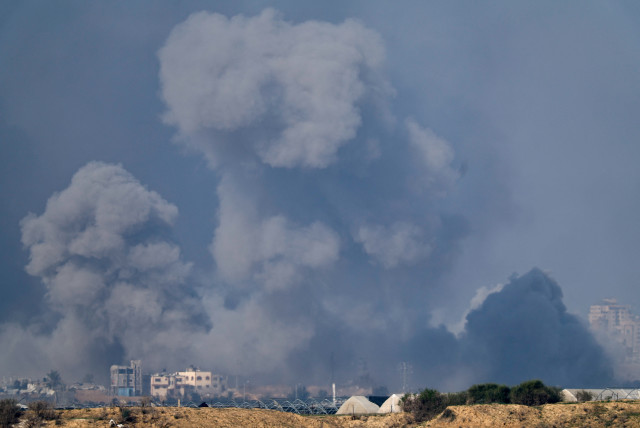
The Washington Post reported arrests were made for breaking a DC law that "prohibits crowding, obstructing or incommoding." The report also cited Capitol Police spokesman Tim Barber, who said that police "were aware of a group’s potential plan to take a tour of the US Capitol Building and then start a protest. It is against the law to demonstrate inside the Congressional Buildings, so we brought in additional officers to be prepared for the moment the group would break the law.”
The report also stated that more than 80 leaders of organizations were among the protesters, all united in demanding US pressure on Israel for a ceasefire.
Go to the full article >>A United Nations Security Council vote on a bid to boost aid deliveries to the Gaza Strip has been delayed by another day as talks continue to try and avoid a third US veto of action over the two-month-long Israel-Hamas war, diplomats said on Tuesday.
The 15-member council was initially going to vote on a resolution - drafted by the United Arab Emirates - on Monday. But it has repeatedly been delayed as diplomats say the UAE and the US struggle to agree on language, citing a cessation of hostilities and a proposal to set up UN aid monitoring.
When asked if they were getting close to an agreement, US Ambassador to the UN Linda Thomas-Greenfield told reporters on Tuesday: "We're trying, we really are."
The draft resolution would demand Israel and Hamas allow and facilitate land, sea, and air deliveries of aid to and throughout the Gaza Strip and ask the United Nations to monitor humanitarian assistance arriving in the Palestinian enclave.
Diplomats said the United States wants to tone down language that "calls for the urgent suspension of hostilities to allow safe and unhindered humanitarian access and for urgent steps towards a sustainable cessation of hostilities."
The United States and Israel oppose a ceasefire because they believe it would only benefit Hamas. Washington instead supports pauses in fighting to protect civilians and allow the release of hostages taken by Hamas.
Washington traditionally shields its ally Israel from any Security Council action. It had already twice vetoed Security Council action since an October 7 attack by Hamas that Israel says killed 1,200 people and saw 240 people taken hostage.
Israel has retaliated against Hamas by bombarding Gaza from the air, imposing a siege, and launching a ground offensive.
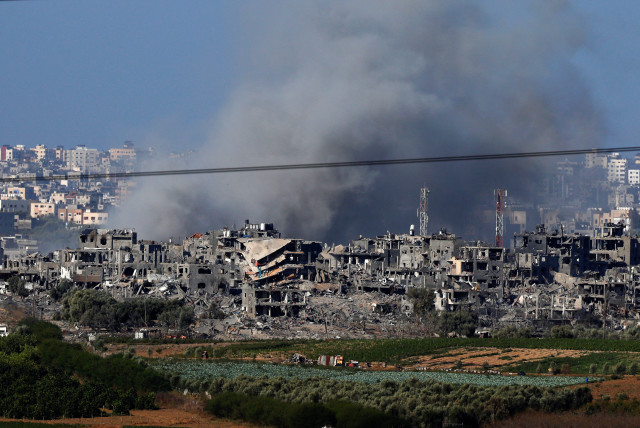
Nearly 20,000 Palestinians have been killed, according to Gaza health officials. UN officials warn of a humanitarian catastrophe in Gaza, with the majority of the coastal Palestinian enclave's 2.3 million people driven from their homes.
Diplomats said that Washington is also unhappy with a proposal in the UAE draft resolution that asks UN Secretary-General Antonio Guterres to establish a monitoring mechanism in Gaza "to exclusively monitor all humanitarian relief consignments to Gaza provided through land, sea and air routes of those states that are not parties to the conflict."
Limited humanitarian aid and fuel deliveries have crossed into Gaza via the Rafah crossing from Egypt, subjected to monitoring by Israel, but UN officials and aid workers say it comes nowhere near to satisfying the most basic needs of Gazans.
On Tuesday, Nate Evans, spokesperson for the US mission to the UN, said: "We believe there needs to be a large increase in humanitarian aid to Gaza, as we have worked to achieve on the ground through our diplomacy. We continue to work constructively with council members on this product."
On Sunday, the Israel-controlled Kerem Shalom crossing into Gaza opened for aid trucks for the first time since the outbreak of war, officials said, in a move to double the amount of food and medicine reaching Gaza.
The UN Office for the Coordination of Humanitarian Affairs said on Tuesday that on Sunday, 102 aid trucks and four tankers of fuel had entered Gaza via the Rafah, and 79 trucks entered Gaza via Kerem Shalom.
"This is well below the daily average of 500 truckloads (including fuel and private sector goods) that entered every working day prior to October 7," it said in a statement.
Earlier this month, the 193-member UN General Assembly demanded a humanitarian ceasefire, with 153 states voting in favor of the move that had been vetoed by the United States in the Security Council days earlier.
A seven-day pause - during which Hamas released some hostages, some Palestinians were freed from Israeli jails, and there was an increase in aid to Gaza - had ended on December 1.
Go to the full article >>The Palestinian Islamic Jihad (PIJ) released a video of two hostages on Tuesday night who are pleading to be released.
The hostages, Elad Katzir, 47, and Gadi Mozes, 79, are both from Kibbutz Nir Oz, one of the communities bordering Gaza that was attacked on October 7 by Hamas.
The video saw the two men calling on Prime Minister Benjamin Netanyahu, Defense Minister Yoav Gallant, and National Unity Party leader Benny Gantz to act further for their release and warned of the dangers of them continuing to remain in captivity.
Mozes's ex-wife, Margalit, mother to three and grandmother to ten, was released earlier during the brief truce deal. Mozes's most recent partner, Efrat Katz, was murdered in the Hamas massacre, Hebrew media reported. N12 also reports that Mozes lacks the medicine he needs in captivity.
Efrat's daughter, Doron, and her two daughters, Aviv and Raz, were also kidnapped but were among the first released last month as a part of the temporary truce deal.
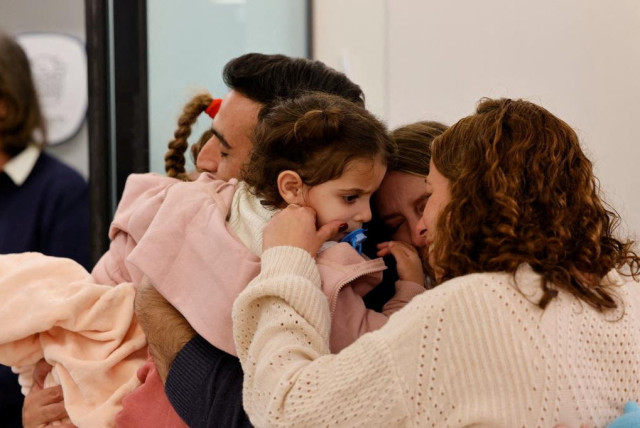
The other hostage, Elad Katzir, is the son of Hannah Katzir, who was also released in the brief truce deal. His father, Rami, was murdered on October 7. The PIJ had previously said before Hannah's release that she had "died of medical complications," which was revealed to be a lie.
The two are seen in the video being in "stable condition," N12 reports.
This comes one day after Hamas released a video of another three hostages in their captivity: Haim Perry, Yoram Metzger, and Amiram Koper.
Go to the full article >>IDF Chief-of-Staff Herzi Halevi and National Security Minister Itamar Ben-Gvir traded barbs in a closed cabinet meeting on Monday night following the IDF’s announcement that it was suspending soldiers for reciting the Shema Yisrael prayer in a mosque in Jenin.
Halevi explained to him the decision was based on the values of the IDF and its commanders, at which point the minister replied: “I am a cabinet member, I am the political rank, we decide [what is moral].”
The Israeli military chief responded: “You are wrong; I will decide what is a moral act and what is not in the army. Do not threaten me.”
In the video circulating on social media, an IDF soldier is seen in the mosque holding a microphone and reciting Shema Yisrael, the same microphone used for the Muslim call to prayer. The echoes of the Shema could be heard bouncing off the walls in Jenin.
The IDF responded to the circulating footage, stating that such demeanor is deemed “unacceptable.” Later, the Israeli military confirmed that the soldiers involved were suspended from all operational activities.
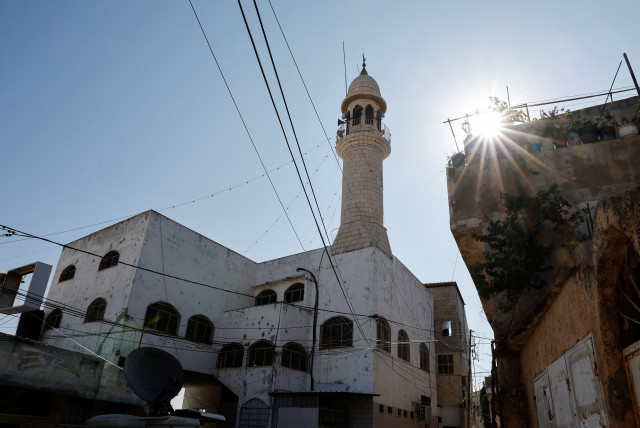
The cabinet also asked Halevi about the achievements of the war. According to two sources, Halevi referred to the elimination of senior Hamas officials and said: “It took the Americans 10 years to bring Osama Bin Laden’s head.”
Some of the ministers were indignant. Justice Minister Yariv Levin asked, “We entered Gaza so that it would take 10 years? Will it take 10 years to eliminate Hamas?”.
Transportation Minister Miri Regev joined in and wondered, “Who will be here in another 10 years to see the result?” Foreign Minister Eli Cohen told her: “We will be here for another ten years,” and Regev replied: “We should bring him [Gaza Hamas leader Yahya Sinwar] in long before 10 years.”
Halevi replied: “Here, there are good people working on it, and it will take much less time.”
Go to the full article >>Hamas leader Ismail Haniyeh is expected to visit Egypt on Wednesday to hold Gaza ceasefire talks, the AFP reported Tuesday, as Prime Minister Benjamin Netanyahu insisted that any hostage deal must include all the remaining hostages in Gaza.
“Just now, I twice sent the Director of the Mossad to Europe to advance a process for the release of our hostages. I will spare no effort on the matter, and the demand is to bring them all,” Netanyahu said in a meeting he held with his wife Sara and family members of the hostages in Tel Aviv on Tuesday night.
"We are committed, and I am personally committed, to the release of all of the hostages. Rescuing them is the highest mission,” Netanyahu said.
Coordinator for the Hostages and Missing Brig.-Gen. (Res.) Gal Hirsch, National Security Council Director Tzachi Hanegbi, and the Prime Minister's Military Secretary, Maj.-Gen. Avi Gil also attended the meeting.
At a meeting of ambassadors posted to Israel, President Isaac Herzog signaled readiness for another pause to the Gaza war.
"Israel is ready for another humanitarian pause and additional humanitarian aid in order to enable the release of hostages,” Herzog said.
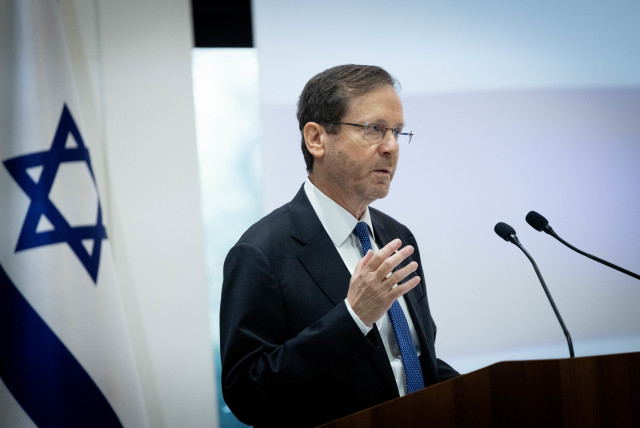
"And the responsibility lies fully with [Hamas leader Yahya] Sinwar and Hamas leadership," he stressed.
Israel and the United States have noted that the war could end at any moment if Hamas would release its hostages and surrender to Israel.
In an initial hostage deal mediated by Qatar and Egypt, the Gaza war was put on hold for seven days in November. 105 captives were freed during this time, but the deal fell apart before its conclusion. Israel and the United States have blamed Hamas for violating that deal.
A meeting of Qatari Prime Minister Mohammed bin Abdulrahman Al Thani, Mossad Director David Barnea, and CIA Director Bill Burns on Monday on steps for a second deal to free further hostages was positive, but no deal is imminent, a source briefed on the diplomatic efforts said.
The three met in Warsaw to discuss a potential new deal to secure the release of Israeli hostages held in Gaza in exchange for a potential humanitarian pause to the war and the release of Palestinians jailed in Israel on security-related charges, including terrorism and killing Israelis. They held a similar meeting in Europe last week.
“The talks were positive with negotiators exploring and discussing different proposals in an attempt to progress on negotiations,” a source told Reuters. “An agreement is not expected imminently, however.”
Qatar and Egypt, which are attempting to mediate a second hostage deal, have not been able to bridge some of the differences between the two sides, including a Hamas demand for a permanent ceasefire.
Netanyahu has explained that any pause to the war must be temporary and that the deal must include all the hostages. It’s presumed that there are more than 120 remaining out of some 250 that Hamas seized during its October 7 infiltration into southern Israel. Hamas also killed over 1,200 people during that attack.
US National Security Council spokesman John Kirby said, “We don’t support a permanent ceasefire at this time. It would simply validate what Hamas did on the 7th of October. It would leave them in power in Gaza, which is unacceptable to us and to our Israeli friends, and of course, it would give them a much longer timeline to prepare and plan additional attacks,” Kirby said.
“We do support smaller, more localized, more targeted humanitarian pauses to get hostages out and to get more aid in,” Kirby said.

The head of the International Committee of the Red Cross (ICRC) on Tuesday deplored the conflict in Gaza as a "moral failure" of the international community and urged Israel and Hamas to reach a new deal to halt the fighting.
She spoke as Hamas has asserted that the death toll from Palestinians in Gaza war violence is close to 20,000. Israel has asserted that over 7,000 of those fatalities are combatants.
“I have been speaking of moral failure because every day this continues is a day more where the international community hasn’t proven capable of ending such high levels of suffering and this will have an impact on generations not only in Gaza,” ICRC president Mirjana Spoljaric told journalists in Geneva following trips to the Gaza Strip and Israel.
“There’s nothing without an agreement by the two sides, so we urge them to keep negotiating...” she said, referring to the release of Israeli hostages.
Although the ICRC facilitated the release of hostages during the truce, the group has been criticized by some Israelis for not doing more to free others and provide them with medical care. Some social media users have equated it to a taxi service to drive hostages out of Gaza.
“You don’t just go there and take the hostages and bring them out,” Spoljaric said, saying that any analogy with an Uber or taxi service was “unacceptable and outrageous.”
“We continue to talk to all sides to then be ready to operationalize the agreement that they reach,” Spoljaric said.
“What is clear is that at the current level of hostilities, a meaningful humanitarian response remains extremely difficult, if not impossible,” she said.
Reuters contributed to this report.
Go to the full article >>The United States believes about eight Americans are still being held hostage by the Palestinian terrorist group Hamas, White House adviser John Kirby said on Tuesday.
Go to the full article >>The international coalition formed by the US to protect maritime navigation in the Red Sea is part of the aggression against the Palestinian people, the political bureau of Yemen's Houthi group said in a statement on Tuesday, adding that the coalition contradicts international law.
"Yemen's armed forces don't represent any threat to any country, we only target Israeli ships or ships heading toward Israeli ports," it added.
"We affirm our steadfast position in supporting the Palestinian people until Israel’s aggression ends and the siege on the Gaza Strip is lifted," the statement reads.
Go to the full article >>Israel will spare no effort in returning all of the hostages taken captive by Hamas from the Gaza Strip, Prime Minister Benjamin Netanyahu assured the hostages' families in a meeting at the Kirya military headquarters in Tel Aviv on Tuesday.
"We are committed, I am personally committed, to releasing all hostages. I sent the Mossad chief to Europe twice to advance hostage release talks," Netanyahu said.
Refusing to commit to the success of Israeli efforts, Netanyahu added: "Will I succeed? I can give you one assurance - we are not stopping," he told the families.
Go to the full article >>IDF Spokesperson Daniel Hagari announced that the IDF had eliminated several Hezbollah terrorists on Tuesday, adding "Hezbollah continues to serve as a defender of Hamas-ISIS and thereby endangers Lebanon and its citizens."
The IDF struck several sites belonging to Hezbollah in southern Lebanon on Tuesday, including weapons storage sites and rocket launchers, after a series of drone infiltrations and rocket launches from Lebanon throughout the day.
Amid the exchanges of fire, the Israeli Air Force struck a terrorist cell near the Lebanese border across from Hanita. IDF tank fire also targeted several Hezbollah sites in southern Lebanon and fired at a threat near the border near Yir'on in northern Israel.
According to the Lebanese LBCI news, one of the Israeli strikes targeted a site belonging to the Green Without Borders organization, an environmental organization used as a front by Hezbollah to place terrorist infrastructure near the border.
On Tuesday evening, Lebanese media reported that a Lebanese citizen was killed by IDF tank fire targeting Rab El Thalathine, near the Lebanese-Israeli border.
Several drone infiltration alerts sounded in northern Israel on Tuesday, with the IDF intercepting at least two suspicious objects over the Lebanese-Israeli border throughout the day. One drone was intercepted near Emek Hahula and another was intercepted near Nir's Cliff on Tuesday afternoon.
Additionally, several rockets were fired from Lebanon toward northern Israel throughout the day, with 18 rockets fired in one barrage toward Kiryat Shmona on Tuesday evening. The Lebanese branch of Hamas's al-Qassam Brigades claimed responsibility for the rocket fire toward Kiryat Shmona.
On Tuesday afternoon, Hezbollah announced that four of its members had been killed in the exchanges of fire between it and Israel, bringing the total number of Hezbollah terrorists confirmed killed since October 8 to 115.
In reference to the rising tensions between Israel and Hezbollah, IDF spokesperson Jonathan Conricus stressed on Monday that "we are closer today to war than we were yesterday," warning that Hezbollah is "playing a very, very dangerous game."
French Foreign Minister Catherine Colonna warned during a visit to Beirut on Monday that an expansion of the conflict between Hezbollah and Israel would "not benefit anyone, and will only increase the risks and distance everyone from security and peace."
Colonna stressed that "if Lebanon is plunged into war, it will not recover."
"I bring a message to those outside Lebanon who are waiting to take advantage of the disastrous situation in Gaza to increase tensions, and I mean Iran and all its tools in Iraq and Syria, and also what the Houthis are doing in the Red Sea. This is a big mistake and a very dangerous matter, and the escalation must be stopped," said the French foreign minister.
A French diplomatic source expressed concern to AFP on that Lebanon could underestimate Israel's determination to protect its borders after the shock of the October 7 attack.
Go to the full article >>The IDF's 162nd Division has finished completely dismantling Hamas’s three battalions of terror forces in the Jabalya area of northern Gaza, killing thousands of Hamas’s forces and arresting 500 terrorists.
There are also an additional 3,000 Hamas-associated persons, non-combatants, who have also been arrested. Over 70 of those arrested directly participated in the October 7 massacre in southern Israel.
Although the IDF had already achieved control over the center of Gaza City, the Shaati area, the Beit Hanoun area, and some other areas by mid-November, IDF operations against Jabalya started later.
They were halted mid-operation by the week-long ceasefire at the end of November and it took around two-and-a-half weeks of renewed fighting to both gain control over Jabalya and to be able to dismantle Hamas’s organized military capabilities.
There were three battalions that split the defense of Jabalya into zones because each battalion commander wanted the honor of defending an area viewed as crucial and central to Hamas’s rule.
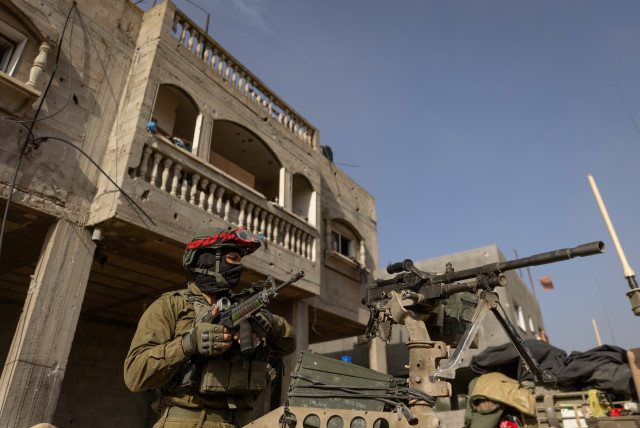
It is unclear to the IDF how long it will keep extensive forces deep in Jabalya once Israel moves to “Stage 3,” referring to a point where the “main war” is over but where the IDF is expected to continue for three to nine months to fight an insurgency.
For example, the IDF expects that it will maintain the right and power to penetrate anywhere in the area to immediately deal with any terror threat, but that might not mean keeping large forces “in the face” of Palestinian civilians if the area, in general, remains stable.
Defense Minister Yoav Gallant said on Monday that different parts of Gaza might transition to “Stage 3” at different rates, with some areas starting to rebuild while others still might remain in extended low-intensity conflict.
Also, the IDF announced on Monday that operations in Beit Hanun were complete and that much of its 252nd Division, with lots of reservists, would be able to return home.
Over 57 houses of the 70 Hamas terrorists from Jabalya who were involved in the October 7 massacre have been destroyed by the IDF, and there are plans to destroy the other 13 as part of a set policy.
Besides those structures, the IDF is currently destroying 40 structures per day, which contain boobytraps and Hamas weapons.
Destroying Hamas’s capabilities in Jabalya included not only fighting, patrolling, and inspecting territory above ground but also profoundly extensive work to dismantle their capabilities underground. Around two full weeks were invested in inspecting and destroying Hamas’s tunnels in Jabalya.
Part of the progress against Hamas’s underground capabilities in Jabalya and in northern Gaza, in general, has been taking control over two houses connected to Hamas's Gaza chief, Yahya Sinwar, both east of Shaati and east of the center of Gaza City.
One of the houses was also connected to Sinwar’s daughter.
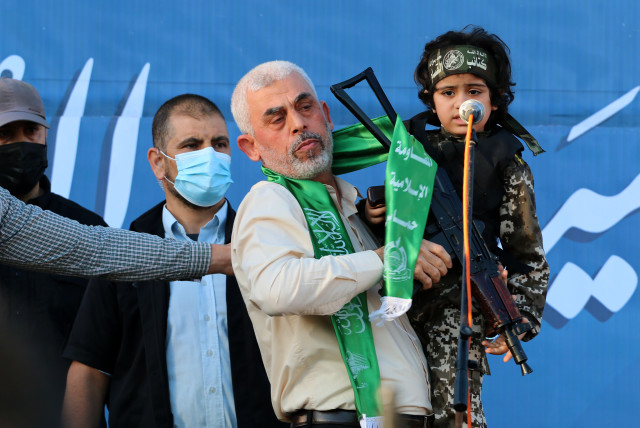
The house had windows that prevented observers from the outside from seeing inside the house, while inside the house, it had fancy curtains.
There were no less than 40 video surveillance cameras connected to the house, which also contained important intelligence items linked to Sinwar and had a “VIP-style” elevator.
In addition, the house had tunnels connecting it to Hamas’s military headquarters, to Shifa Hospital, and to a mosque which Hamas used extensively for terror operations.
Some IDF officials confessed to being surprised at how advanced and extensive the underground networks were, even though IDF intelligence has known about Hamas’s heavy investment in tunnels for years.
According to some Hamas forces who surrendered to the IDF, part of what convinced them to surrender was being attacked from five different directions at once.
Some of those who surrendered said they viewed the Israeli onslaught as a sign that the IDF was crazy, noting they had not imagined the intensity of the attack. They also expressed anger at Sinwar having abandoned them and were just desperate for food and water at any cost.
Similar to the videos of the surrenders that were circulated on social media, IDF sources described moments of surrender as large amounts of Hamas forces all coming out of their positions at once with their hands up.
One of the next missions of IDF 162nd Division will involve achieving control over the areas of Daraj and Tuffah, which are said to be the last and smallest remaining areas of northern Gaza, which the IDF has still not engaged much.
Daraj and Tuffah are also the only areas in northern Gaza that are still able to consistently fire rockets, with most rockets fired on Israel now coming from Rafah in deep southern Gaza.
There is still heavy fighting in Shejaia, another northern Gaza area, but the IDF has been at work there for over two weeks and has already made significant progress.
Go to the full article >>



